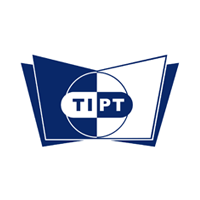 Dosage forms include ointments, creams, ingestible tablets, and other ways that medicine is administered. From new processes to release drugs into the human body, to 3D printing for flexible doses, innovations in dosage forms are changing the industry for the better. These new developments have the potential to increase patient compliance and their quality of life, resulting in more effective treatment. They can also create more cost-effective manufacturing processes for pharmaceuticals, as well as enabling more small-batch and personalized drugs. If you’re excited to work in pharmaceuticals, you’ll want to know more about innovations in dosage forms. Read on for what’s happening in the industry to make medication more efficient and effective!
Dosage forms include ointments, creams, ingestible tablets, and other ways that medicine is administered. From new processes to release drugs into the human body, to 3D printing for flexible doses, innovations in dosage forms are changing the industry for the better. These new developments have the potential to increase patient compliance and their quality of life, resulting in more effective treatment. They can also create more cost-effective manufacturing processes for pharmaceuticals, as well as enabling more small-batch and personalized drugs. If you’re excited to work in pharmaceuticals, you’ll want to know more about innovations in dosage forms. Read on for what’s happening in the industry to make medication more efficient and effective!
Personalized Medicine Provides the Right Treatment to Individuals
More and more, medicine is being altered to cater to specific patient characteristics, preferences, and individual needs. This extends through all of a patient’s stages of care, including prevention and follow-up.
Advanced diagnostic tools are driving personalized medicine forward, most commonly with genome sequencing. You may know that genome sequencing tailors treatments to individual molecular profiles, instead of applying the one-size-fits-all approach to patients with similar diagnoses. This technology has created a vast amount of data that can be used to identify useful biomarkers. As you learn about processing dosage forms in pharmaceutical technology courses, you may be excited by the knowledge that more data is being collected through new technology, for future personalization.

Often, anatomy and physiology are taken into consideration when developing personalized medicine. 3D imaging of a patient’s anatomy using physiological sensors can hint at how a person might respond to treatment and give information to personalize a device or product before it is used. This allows for more effective treatment that fits with a patient’s physical makeup and will hopefully encounter fewer issues.
Controlled-Release Innovations for Pharmaceutical Technology School Grads
Controlled-release drugs are engineered to release their active ingredients at pre-specified times. These drugs can be pulse-release, extended-release, or delayed-release. Pulse-release sends multiple releases into the body, extended-release maintains a steady release of medication over time, and delayed-release waits to release later than the time of administration.
In pharmaceutical training, you will primarily focus on solid dosage forms. Controlled-release drugs are an important innovation in this form of dosage. Artificial DNA is now being used in new developments with controlled-release drugs. A team at the Technical University of Munich have developed a process using hydrogels and artificial DNA to administer dosage forms containing multiple active ingredients. These ingredients would then release in sequence at pre-determined times, helping patients who must take several medications at fixed intervals. While there are already ointments and creams that release with a time delay, these can’t guarantee active ingredients won’t be released at the same time.

What Pharmaceutical Training Grads should know about 3D Printing
On-demand, personalized medicine is becoming more of a focus in the pharmaceutical industry. Oral solid dosage drugs and combination pharmaceutical products can benefit from the potential that lies in 3D printing to create more personalized products. The ability to modify a product through a digital file opens up manufacturing to more flexibility. An example of this is simply changing the infill (amount of material inside the capsule) so that a dose can be altered and made in small batches. Flexible dosing could mean patients no longer need to crush or split pills to create the perfect dose for their prescription.
This is yet another way that the trend of moving away from one-size-fits-all is popping up in pharmaceuticals.
Are you interested in pharmaceutical technology school?
Contact Toronto Institute of Pharmaceutical Technology for more information.
